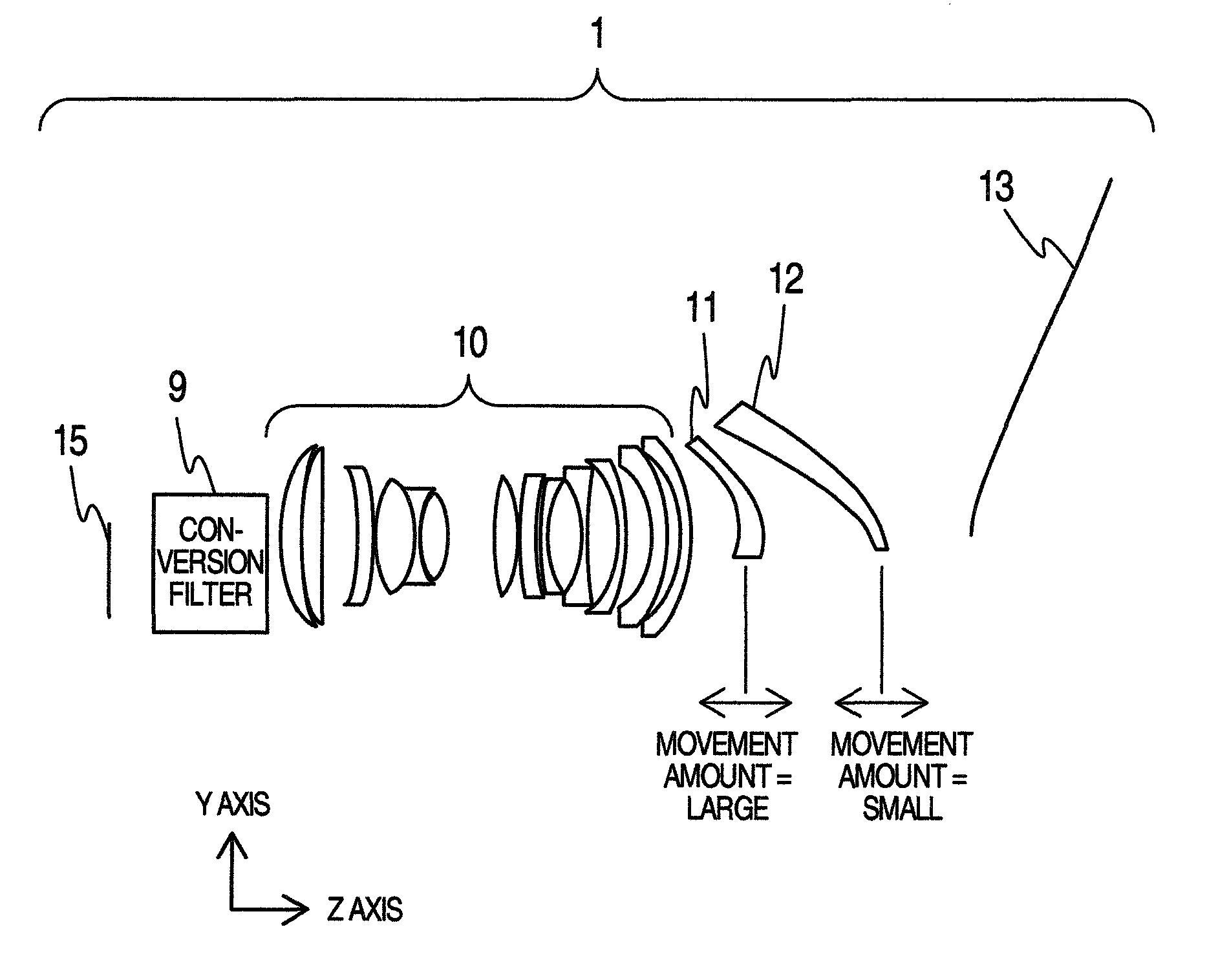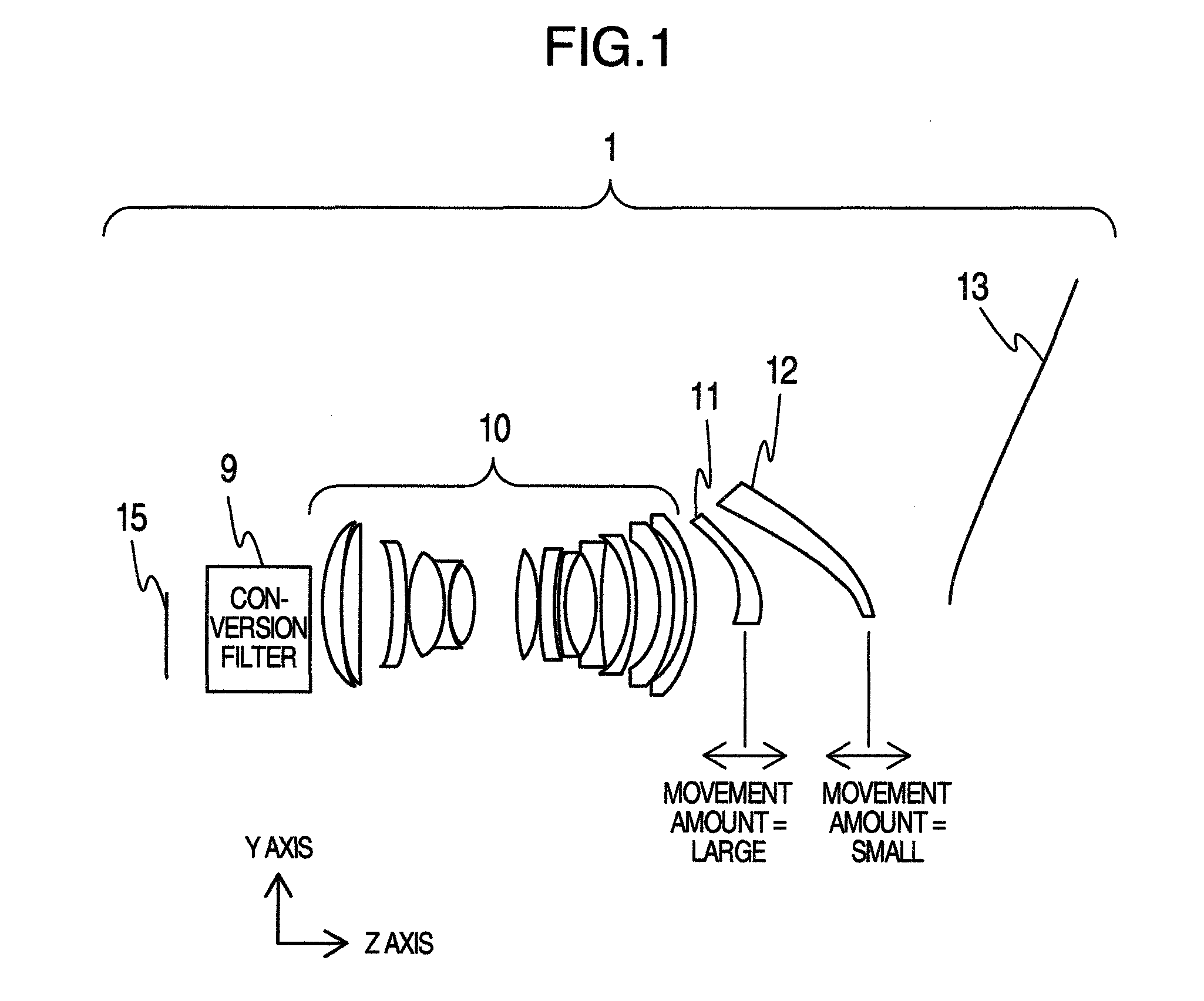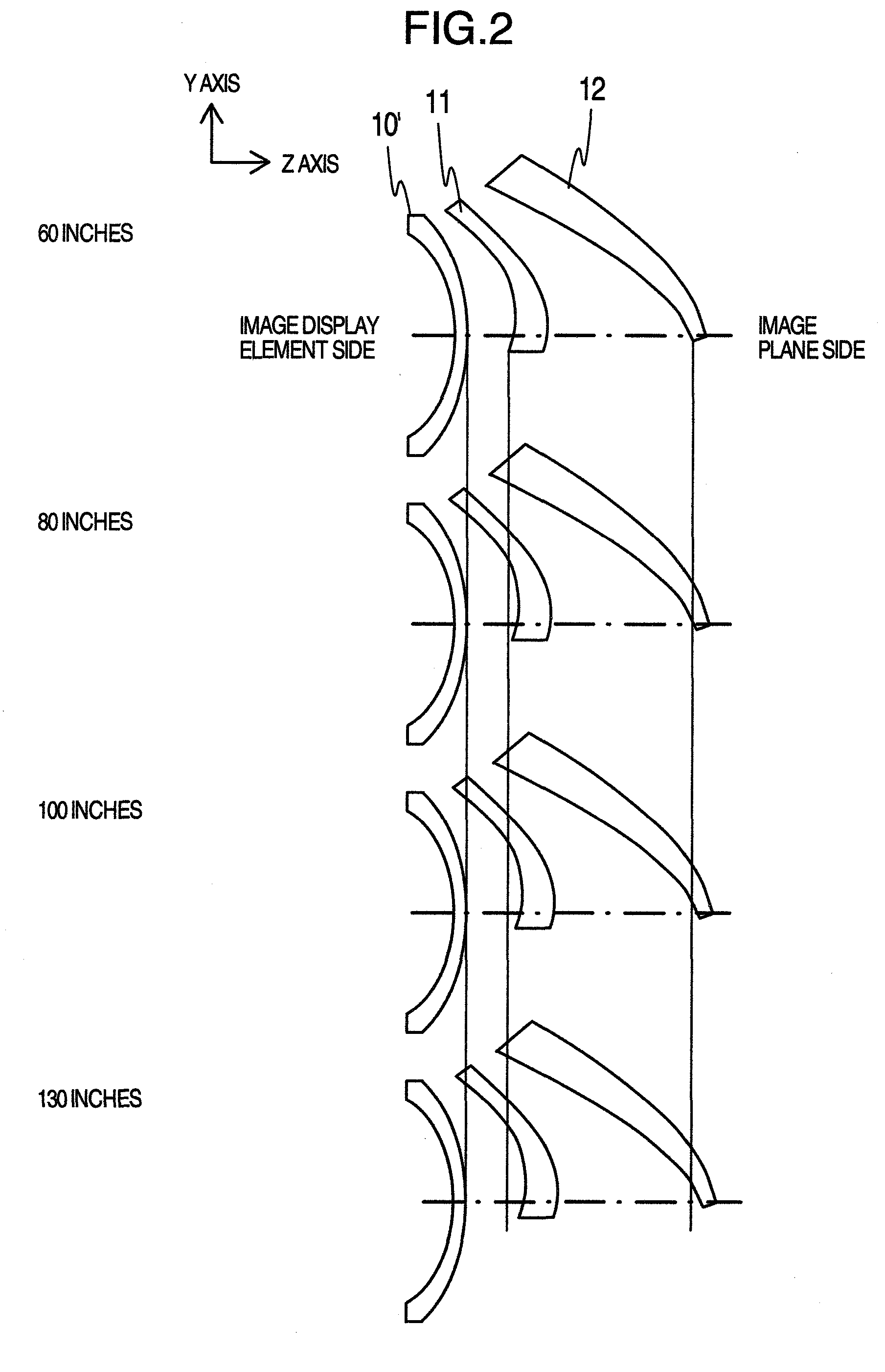Oblique projector having movable free form lenses
a projector and free-form technology, applied in the direction of printers, instruments, camera focusing arrangement, etc., can solve the problems of further shortening of the projection distance and the need for miniaturization of the projection optic system, and achieve the effect of shortening the projection distance and miniaturizing the projection optic system
- Summary
- Abstract
- Description
- Claims
- Application Information
AI Technical Summary
Benefits of technology
Problems solved by technology
Method used
Image
Examples
Embodiment Construction
[0021]Embodiments of the present invention are now described with reference to the accompanying drawings.
[0022]First, referring to FIGS. 4A and 4B, a basic composition and the effect of angle-of-view widening of a wide-conversion lens are described. FIG. 4A illustrates a focal distance f1 of a primary lens 200 in case where there is no wide-conversion lens 100. A luminous flux from infinity is focused on a focal point of the primary lens 200. On the other hand, FIG. 4B is a schematic diagram illustrating a composition in which a wide-conversion lens 100 is disposed on the image plane side of the primary lens 200. A luminous flux from infinity is pushed up by a concave lens 112 of the wide-conversion lens 100 and returned to a collimated luminous flux by a convex lens 111 to be focused on the focal point of the primary lens 200. Actually, the primary lens 200 is designed to have a predetermined F-number and, when observed from the image display element side, a collimated light to ent...
PUM
 Login to View More
Login to View More Abstract
Description
Claims
Application Information
 Login to View More
Login to View More - R&D
- Intellectual Property
- Life Sciences
- Materials
- Tech Scout
- Unparalleled Data Quality
- Higher Quality Content
- 60% Fewer Hallucinations
Browse by: Latest US Patents, China's latest patents, Technical Efficacy Thesaurus, Application Domain, Technology Topic, Popular Technical Reports.
© 2025 PatSnap. All rights reserved.Legal|Privacy policy|Modern Slavery Act Transparency Statement|Sitemap|About US| Contact US: help@patsnap.com



